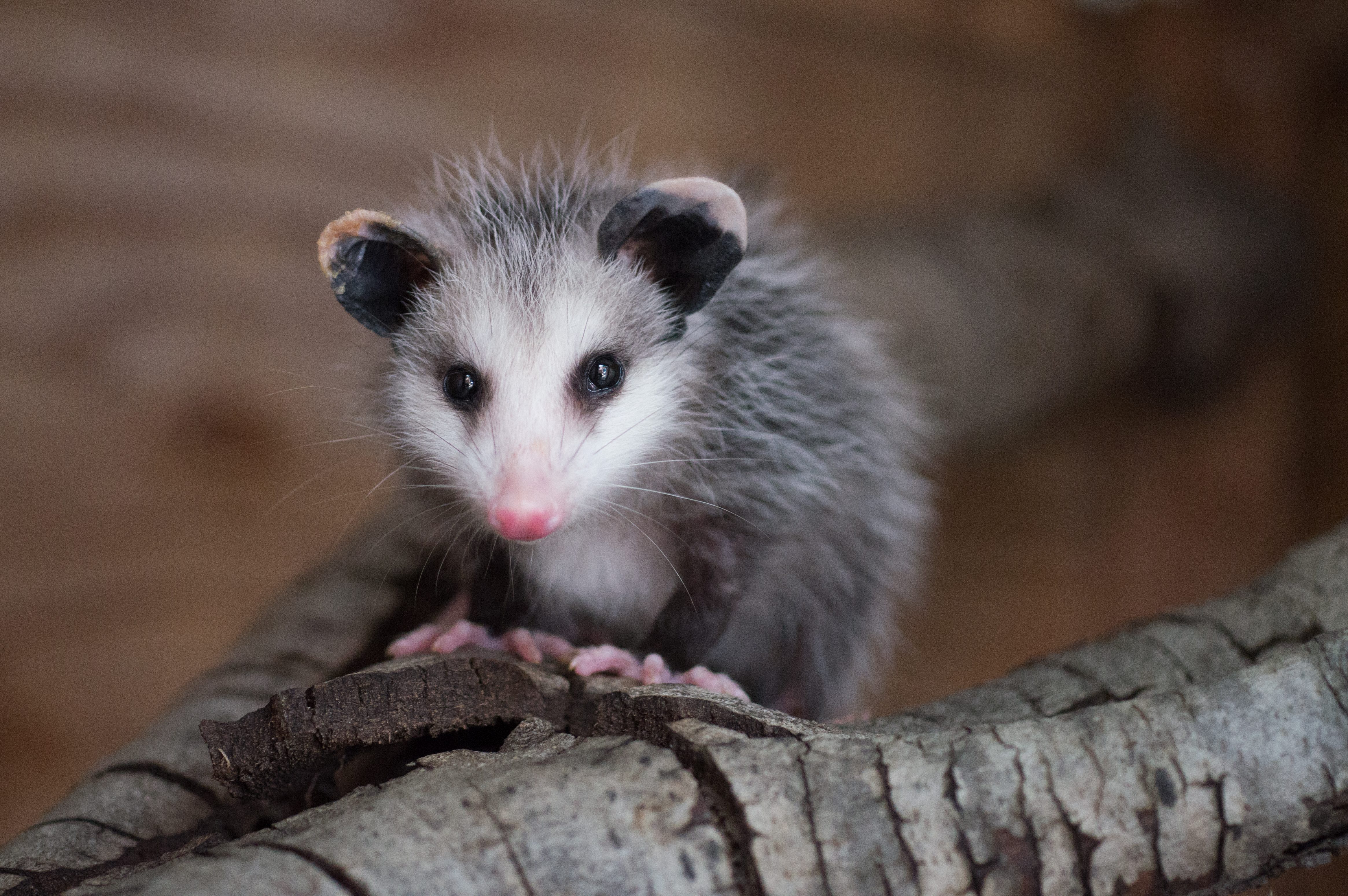Opossums: More Friend Than Foe
By Anna Noble, Administrative Assistant

Young Virginia Opossum
Photo by Kim Barker
California Wildlife Center admits an average of 250 opossums yearly. Of this number, 40-50 are adults, while the remainder are orphans. Most adult opossums who are admitted have experienced bodily injury due to trapping, predation, gun shots, or encounters with vehicles on roadways. Joeys (the word for baby opossums) that are seven inches or longer should be left if found alone unless they show obvious sign of injury. Smaller joeys should come to CWC for treatment.
While the opossum is sometimes perceived as a “nuisance” animal, they serve a pivotal role in the ecosystem. Opossums act as nature’s double-duty pest control and sanitation. They eat mice, rats, snakes, worms, slugs and insects, rotting fruits and vegetables, and even garbage. As they have an unusually high need for calcium, they often eat the skeletons of rodents and road kill for a boost.
Opossums are incorrectly perceived as unclean and disease-ridden animals. In fact, they bathe and groom themselves nearly as often as house cats. They also have very powerful immune systems which fend off many diseases. Opossums almost never have rabies, as their low body temperature makes it difficult for the virus to survive. They are even immune to the venoms of snakes, scorpions and bees, as well as to ricin and botulinum toxin! Despite having some similar physical traits, opossums are not related to rodents and are actually the only marsupial found in North America.
Despite their tendency to appear vicious when showing their fifty teeth, opossums are rarely looking for trouble. They are very docile animals, and when threatened their first instinct is to simply run away. If danger persists, they will show their teeth and make a hissing sound. And when neither of these options prevail, they fall into a comatose state in which their bodies temporarily freeze, causing them to appear lifeless. This defense mechanism is known as “playing possum.”
